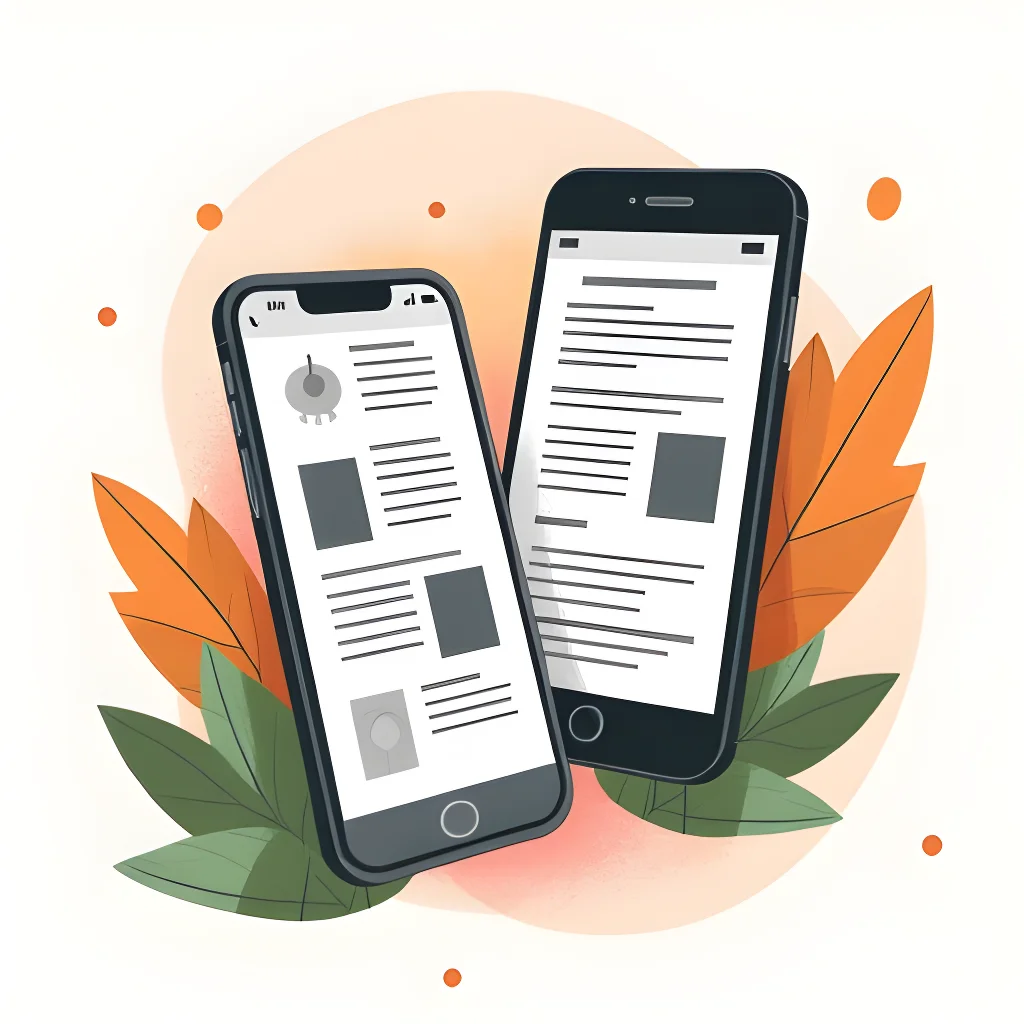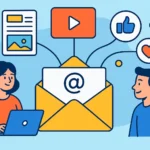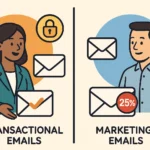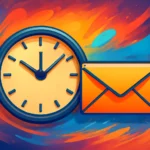Now Reading: How to Use Push Notification Strategies for Mobile User Retention and Skyrocket Engagement
-
01
How to Use Push Notification Strategies for Mobile User Retention and Skyrocket Engagement
How to Use Push Notification Strategies for Mobile User Retention and Skyrocket Engagement

Imagine launching a mobile app that users love – only to watch them drift away after a few days or weeks. It’s a common scenario, but it doesn’t have to be your story. The secret weapon? Push notification strategies for mobile user retention. When used thoughtfully, push notifications can turn fleeting downloads into loyal, engaged users who keep coming back for more.
In this guide, you’ll discover how to craft and implement push notification strategies that not only capture attention but also build lasting relationships with your app users.
Key Takeaways
- Push notifications are direct messages sent to users’ devices, even when the app isn’t open, to engage, inform, and prompt action.
- In mobile marketing, push notifications work by delivering timely, relevant, and personalized content that encourages users to return and interact with your app.
- Strategic push notification campaigns – using segmentation, personalization, and optimal timing – can significantly boost user retention and reduce churn.
- Overuse or irrelevant notifications can lead to opt-outs or uninstalls, so quality and relevance matter more than quantity.
- Data-driven approaches and continuous optimization are essential for maximizing the impact of your push notification strategies.
How Do Push Notifications Work In Mobile Marketing?
Push notifications are brief, clickable messages sent from a mobile app to a user’s device, designed to grab attention and prompt action – even when the app is closed. In mobile marketing, they serve as a direct communication channel between the app and its users. Here’s how they work:
- The app requests permission from the user to send push notifications.
- Once granted, the app can send messages via a push notification service (like Apple Push Notification Service or Firebase Cloud Messaging).
- Notifications are triggered by user actions, app events, or scheduled campaigns.
- The user receives the notification on their device’s lock screen or notification center.
- Well-crafted notifications drive users back into the app, encourage engagement, and foster retention.
Push notifications are powerful because they reach users in real time, providing relevant information, offers, or reminders that keep your app top-of-mind.
Useful Articles:
Why Push Notification Strategies Matter For Mobile User Retention
Mobile app retention is the backbone of long-term success. Acquiring users is only half the battle; keeping them engaged is where push notification strategies shine. Here’s why:
- Apps that use push notifications see up to a 20% higher retention rate compared to those that don’t.
- Personalized push notifications can increase user engagement by up to 88%.
- Strategic push campaigns reduce churn by reminding users of your app’s value and prompting timely actions.
Let’s dive into the strategies that make push notifications an essential tool for mobile user retention.
Building A Push Notification Strategy
Define Clear Objectives
Before sending a single notification, clarify your goals. Are you aiming to increase daily active users, drive purchases, or re-engage dormant users? Setting measurable objectives ensures your campaigns are focused and effective.
Understand Your Audience
Segmentation is key. Not all users are alike, so group them based on behavior, preferences, location, or lifecycle stage. This allows you to send relevant messages that resonate with each segment.
Plan Content And Timing
Develop a content calendar that aligns with your objectives and user preferences. Determine the optimal times to send notifications – considering time zones, user activity patterns, and frequency to avoid overwhelming your audience.
Personalize Messaging
Use user data to tailor notifications. Personalized messages – such as addressing users by name, referencing recent activity, or offering targeted recommendations – are far more likely to drive engagement.
Monitor And Optimize
Track key performance indicators (KPIs) like open rates, click-through rates, and retention metrics. Use this data to refine your strategy, test new approaches, and continually improve results.
Useful Articles:
Crafting Effective Push Notification Campaigns
Onboarding And Early Engagement
The first days after installation are critical. Use push notifications to:
- Welcome new users and guide them through onboarding.
- Highlight key features and encourage first actions (e.g., completing a profile, making a purchase).
- Send helpful tips or content to reduce confusion and build early habits.
Example: A fitness app sends a welcome message, followed by daily tips to help users set up their first workout routine.
Behavior-Based Notifications
Trigger notifications based on user actions or inaction:
- Abandoned cart reminders for e-commerce apps.
- Nudges for users who haven’t opened the app in a set period.
- Celebrating milestones or achievements (e.g., streaks, completed challenges).
Example: A language learning app sends a motivational nudge if a user misses their daily lesson, using humor or encouragement to prompt action.
Transactional And Informational Pushes
Keep users informed with valuable updates:
- Order confirmations, delivery updates, or account alerts.
- Personalized content recommendations based on user interests.
- Announcements about new features or app updates.
Example: A news app notifies users when a story breaks in their favorite category.
Win-Back Campaigns
Re-engage dormant users with compelling reasons to return:
- Special offers or discounts for lapsed users.
- Personalized messages referencing past activity or interests.
- Highlighting new features or content since their last visit.
Example: An e-commerce app sends a “We miss you!” message with a promo code for users who haven’t shopped in 30 days.
Location-Based And Contextual Notifications
Use geofencing and contextual triggers to deliver relevant messages:
- Notify users of nearby stores, events, or offers.
- Send reminders based on location (e.g., “Grab a coffee on your commute!”).
Example: A restaurant app sends a lunch special notification when a user is near one of its locations around noon.
Best Practices For Push Notification Strategies
Make Every Notification Valuable
Users should perceive every notification as beneficial. Avoid generic or irrelevant messages – focus on delivering value, whether it’s a timely reminder, exclusive offer, or useful information.
Keep It Concise And Actionable
Short, clear messages with a direct call to action perform best. Users should instantly understand the purpose and benefit of the notification.
Perfect Your Timing
Send notifications when users are most likely to engage. Analyze data to determine peak times and respect local time zones. Avoid sending messages at odd hours.
Limit Frequency
Too many notifications can lead to opt-outs or app uninstalls. Find the right balance – enough to stay top-of-mind, but not so many that you become a nuisance.
Use Rich Media And Personalization
Enhance notifications with images, emojis, and personalized content. Visual elements and tailored messages increase open and engagement rates.
Test, Measure, And Iterate
A/B test different messages, timings, and formats to see what works best. Continuously monitor results and adapt your strategy based on user feedback and analytics.
Useful Articles:
Real-World Examples Of Push Notification Success
Duolingo: Humor And Motivation
Duolingo uses witty, motivational messages to nudge users back into daily lessons. Their playful approach keeps learning fun and drives high engagement.
Starbucks: Personalized Offers
Starbucks sends personalized offers based on past purchases and user preferences. By timing messages around peak coffee hours, they maximize relevance and conversion.
Spotify: Timely Music Alerts
Spotify notifies users about new releases from their favorite artists, ensuring notifications are both timely and deeply relevant to individual tastes.
Advanced Strategies: Automation, Segmentation, And AI
Automated Flows
Set up event-triggered notifications that respond to real-time user behavior. For example, send a discount offer immediately after a user completes an in-app purchase to encourage repeat business.
Sophisticated Segmentation
Go beyond basic demographics. Segment users by engagement level, purchase history, or even acquisition source to deliver hyper-relevant messages.
AI-Driven Personalization
Leverage machine learning to analyze user behavior and predict the best times, content, and offers for each individual. AI can help automate personalization at scale, boosting retention and satisfaction.
Common Mistakes To Avoid
- Sending too many or irrelevant notifications, leading to user fatigue.
- Ignoring user preferences or failing to offer opt-out options.
- Neglecting to test and optimize campaigns based on real data.
- Overlooking the importance of onboarding and early engagement.
Measuring The Impact Of Your Push Notification Strategy
Track these key metrics to assess and improve your campaigns:
- Open Rate: Percentage of users who open the notification.
- Click-Through Rate (CTR): Percentage of users who tap the notification and take action.
- Retention Rate: Percentage of users who return to the app after receiving notifications.
- Churn Rate: Percentage of users who uninstall or stop using the app.
- Conversion Rate: Percentage of users who complete a desired action (purchase, sign-up, etc.) after receiving a notification.
Use analytics tools to monitor performance, identify trends, and uncover opportunities for optimization.
Actionable Tips For Maximizing Mobile User Retention With Push Notifications
- Always ask for permission and explain the benefits of enabling notifications.
- Personalize messages using the user’s name, preferences, and behavior.
- Send onboarding sequences to guide new users and reduce early churn.
- Use behavioral triggers to nudge users at key moments.
- Offer exclusive content, discounts, or rewards to incentivize engagement.
- Respect user privacy and preferences – make it easy to manage notification settings.
- Regularly review analytics and user feedback to refine your strategy.
Push notification strategies for mobile user retention are a game-changer for app marketers seeking to build lasting engagement and loyalty. By delivering timely, personalized, and valuable messages, you can keep your users coming back, reduce churn, and drive sustained app growth. Start implementing these proven strategies today to unlock the full potential of your mobile app and turn casual users into devoted fans.




















